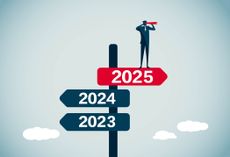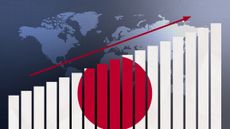Some of the Unemployed May Never Work Again
More folks than ever before have been out of a job for a year or more. The prognosis for them isn't good. And that spells bad news for the economy.

It's likely to take five or more years for the ranks of the long-term unemployed to return to a more normal level. With the unemployment rate remaining stubbornly high and job creation anemic, the number of would-be wage earners who have been out of work for a year or more is ballooning. It's risen from 668,000 when the recession began at the end of 2007 to the current tally of 4.3 million -- nearly 3% of the labor force and almost three times the previous post-World War II high of 1% in 1982.
That time, it took about five years for the number of long-term unemployed Americans to recede to its prerecession total. This time, there's reason to believe the tide will take longer to ebb. One reason: In the roughly 60 months since the inflated housing market crested, about 2 million jobs in construction have disappeared. Although housing construction will gradually recover, it won't return to bubble levels for a couple of decades, at least. As a result, many of today's unemployed construction workers may never earn a paycheck again. Moreover, the longer someone is out of work, the less likely he or she is to return to the workplace. Job skills atrophy, especially in fields that require computer use or other rapidly evolving technology.
What's more, following this recession, the spectrum of workers finding themselves out of work for a prolonged period is broader than in the past. Just 35% of those now counted among the long-term unemployed were working in factories before the recession. In the downturn of the early 1980s, 55% of those with no jobs for a year or more came from factories. This time, a greater portion were earning their livings in finance, insurance, real estate and business services. The ratio of college graduates is higher now, too.

Sign up for Kiplinger’s Free E-Newsletters
Profit and prosper with the best of expert advice on investing, taxes, retirement, personal finance and more - straight to your e-mail.
Profit and prosper with the best of expert advice - straight to your e-mail.
The fact is, "natural unemployment" has probably crept up in recent years. In the late 1990s, many economists considered the nation to be at full employment with a jobless rate around 4% -- just enough to account for folks moving between jobs plus enough slack to prevent wage inflation. Now economists figure that the benchmark is about 5.5% unemployment, maybe even 6% -- closer to what had been considered natural unemployment through most of the previous two decades. Odds are it'll stay near that higher percentage for years, long after the economy is operating at full steam.
That's a bum deal on two scores. Having a larger share of the workforce unable to find jobs at any given time keeps pressure on government to spend more on the social safety net -- not just jobless benefits but also Medicaid, food stamps and more. And more long-term unemployed means millions of shoppers staying away from malls, auto dealerships, restaurants and other businesses.
The outlook isn't good. Almost one-third of today's jobless have been out of work for more than one year. Even though the economy is improving, job creation remains sluggish. It will be several months before employers can be counted on to consistently add 130,000 net new jobs a month, and that will only match growth of the labor force from immigrants and young folks just starting out. To bring the unemployment rate down will take sustained net job growth of much more than that.
Why are there so many long-term unemployed this time around? First and foremost, it's because this recession threw a whopping 8.4 million people out of work -- compared with 2.9 million in the early 1980s. In addition, hiring in this recovery has been slower than in all other postwar economic recoveries.
It's also possible that extending unemployment benefits beyond the standard 26 weeks -- as Congress has done several times -- discourages people from trying to find work. Critics of lengthier benefit periods cite the national average of 90 weeks of benefits in the current recession and recovery versus an average of 55 weeks in 1983. But Federal Reserve economists say that even without the extended benefits, the number of long-term unemployed would total at least 3 million, still a record.
Get Kiplinger Today newsletter — free
Profit and prosper with the best of Kiplinger's advice on investing, taxes, retirement, personal finance and much more. Delivered daily. Enter your email in the box and click Sign Me Up.

-
 Will You Owe Taxes on Your Recently Forgiven Student Loan?
Will You Owe Taxes on Your Recently Forgiven Student Loan?Loan Forgiveness If you received student debt forgiveness last year, know these key points when filing taxes. Plus — what can you expect from a new president?
By Kate Schubel Published
-
 Do Wildfires Have You Worried About Your Insurance Coverage? Here's What to Do
Do Wildfires Have You Worried About Your Insurance Coverage? Here's What to DoWith the California wildfires causing billions of dollars in damage, now is a good time to assess your homeowner's insurance and ensure it covers disasters.
By Sean Jackson Published
-
 Three Ways President Trump Could Impact the Economy
Three Ways President Trump Could Impact the EconomyThe Letter Some of Trump's top priorities could boost economic growth, but others risk fueling inflation.
By David Payne Published
-
 10 Predictions for 2025 from The Kiplinger Letter
10 Predictions for 2025 from The Kiplinger LetterThe Kiplinger Letter As 2025 arrives, here are our top 10 forecasts for the new year.
By Letter Editors Published
-
 Europe Faces Economic and Political Headwinds Next Year
Europe Faces Economic and Political Headwinds Next YearThe Letter Challenges for Europe: Potential tariffs, high energy prices and more competition from China will weigh on the bloc in 2025.
By Rodrigo Sermeño Published
-
 Don't Sleep on Japan's Economic Transformation
Don't Sleep on Japan's Economic TransformationThe Letter After almost three lost decades, Japan — one of the world's biggest economies — is finally showing signs of life.
By Rodrigo Sermeño Published
-
 Kiplinger Outlook: Telecom Companies Brace for Tough Times
Kiplinger Outlook: Telecom Companies Brace for Tough TimesThe Letter The telecom industry is entering a new era that threatens profitability. But the coming Trump administration will make it easier for the major players to adjust.
By John Miley Published
-
 Start-ups Trying to (Profitably) Solve the World’s Hardest Problems
Start-ups Trying to (Profitably) Solve the World’s Hardest ProblemsThe Letter More investors are interested in companies working on breakthrough science to tackle huge societal challenges. The field of deep tech has major tailwinds, too.
By John Miley Published
-
 The Big Questions for AR’s Future
The Big Questions for AR’s FutureThe Letter As Meta shows off a flashy AR prototype, Microsoft quietly stops supporting its own AR headset. The two companies highlight the promise and peril of AR.
By John Miley Published
-
 China's Economy Faces Darkening Outlook
China's Economy Faces Darkening OutlookThe Letter What the slowdown in China means for U.S. businesses.
By Rodrigo Sermeño Published